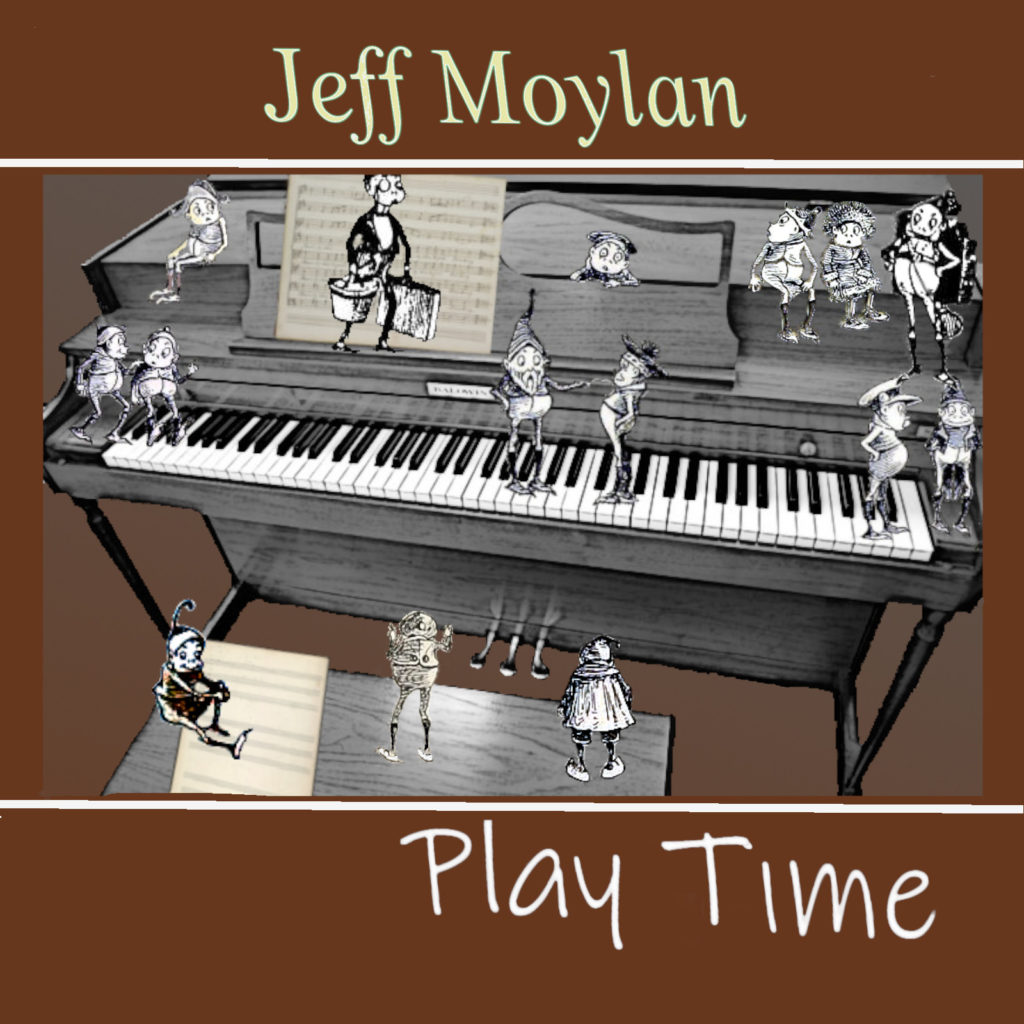Each of these tunes is intended to represent a story which is told and embellished by a storyteller, sometimes speaking alone and sometimes joined in the tale by others. I lay out a brief tune and then quickly move into structured descriptive passages which are intended to illustrate the idea behind the story. I conceive this scenario, not imagining myself as the storyteller, but rather as a listener who transcribes into music. When I write these pieces, it is as if I had taken it all in verbally and then played it out musically, as if I am recalling how I reacted, how I felt upon seeing the storyteller gesturing to conjure memories into the air; hurriedly glossing over some parts of the story and then speaking slowly and intently at others. It’s as if I am recalling how other individuals, animated upon hearing the tale had themselves contributed passages, sometimes augmenting, sometimes intertwining their parts with the original. So when writing the music, it is important for me to be faithful not only to the tale, but to the tellers. Only then can I ensure that in each retelling they remain intrinsic to the truth of the story.
Storytelling is so essential to people and society that its rhythms and cadences inform each part of our lives. Indeed, people are inherently focused on a linear conception of reality so that we tend to expect everything to have a beginning, a middle, and an end. Music usually follows this expectation and tries to fulfill it. Thus it may contain rigidly structured sections that can repeat or follow patterns. Some music can be “informal” in that is intended to follow only a loose outline of organizational structure. Listeners of music often rely upon structure to help them know what to anticipate, and they even willingly permit composers to manipulate their emotions with repetitive hints and melodic tricks that play upon memory and sensation. Naturally music flows from the musician to the listener, and in this, like all unilateral transactions, the recipient does not like to be ‘left hanging’, or to be ‘played falsely’. And so music that does not adhere to conventional forms can leave listeners feeling uncomfortable, or even, “cold”. Storytelling is so influential, such an all-encompassing force unto itself, that it is not bound by convention. Free-form stories may defy linear formats and expectations, and story-tellers may rely upon stream-of-consciousness, or free-association, or poetic imagery to tell their stories. Furthermore, storytellers may not be reliable, either in memory or in fact, intentionally or otherwise. Music that relates these stories, or stories from such sources, can be especially vivid and striking; and yet it can often make the listener feel imposed upon, for it may remove the listener’s feeling of partial control.
As a composer I am aware of the temptation to fly into free improvisation, especially when I am telling stories that are free of form, or that lack rationale or a “natural”conclusion. I try to restrain myself in order to retain the descriptively visual connection that my music is intended to make. But allow me to beg your indulgence for my reliance upon creative license, and also let me thank you for the time you have spent or may spend hearing, or better yet, listening to my music.

and everywhere from the stream to the cloud